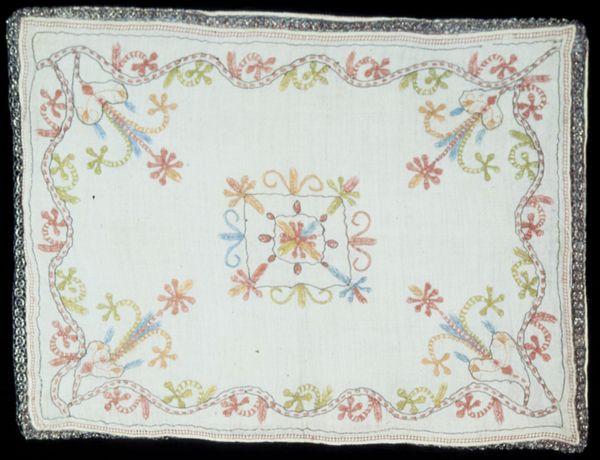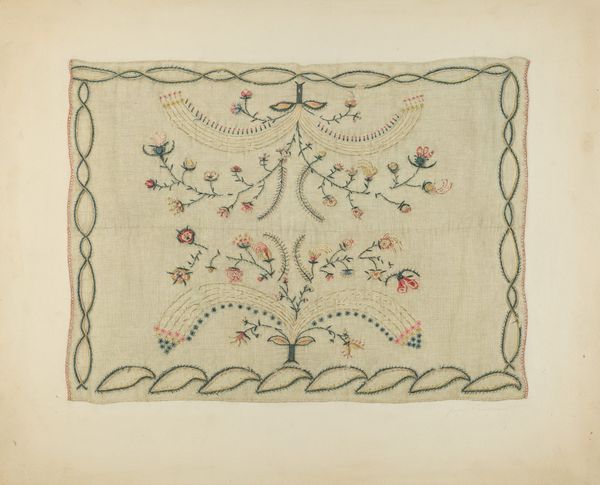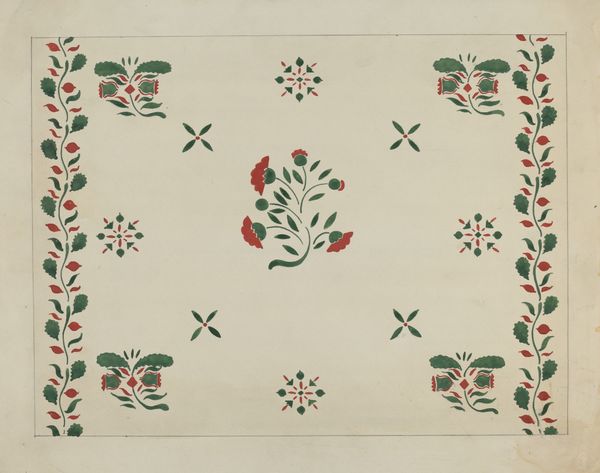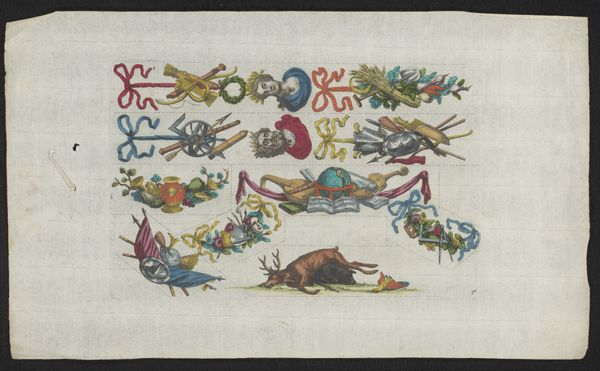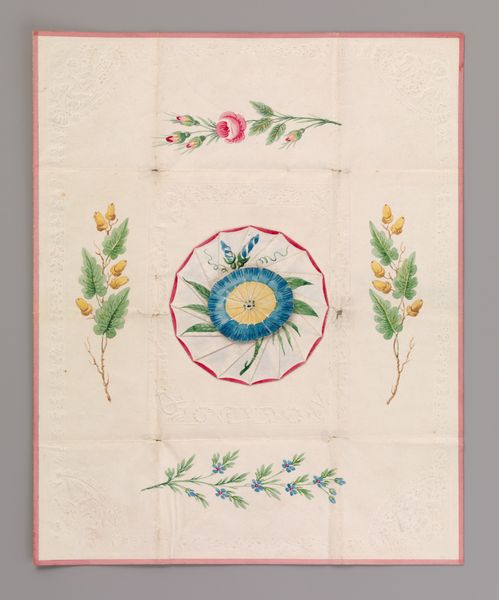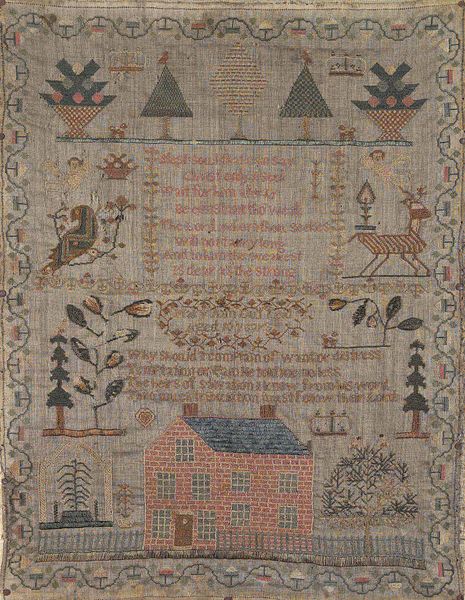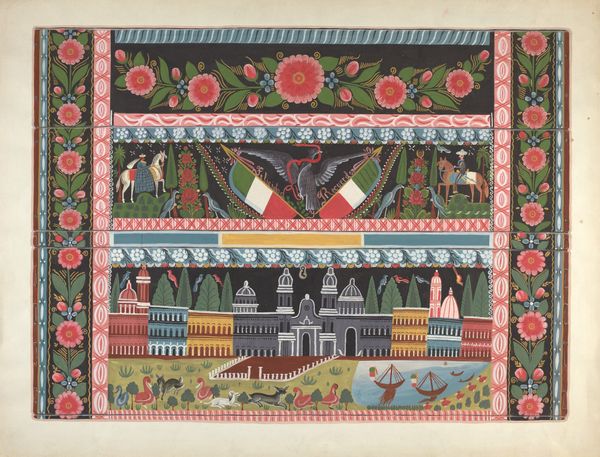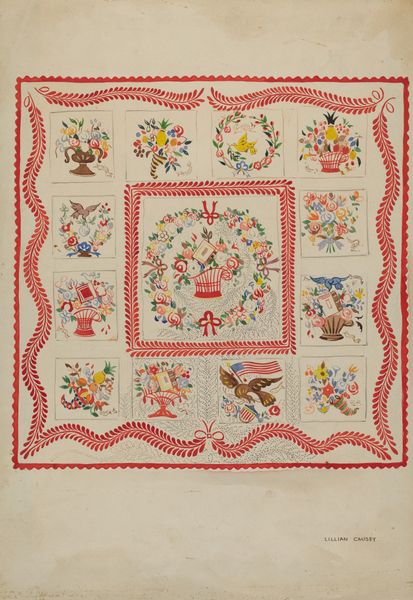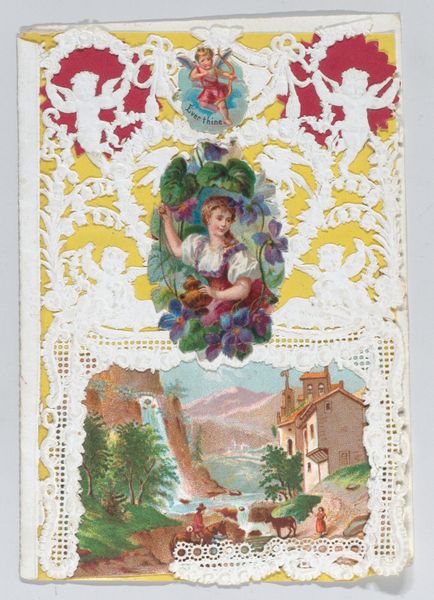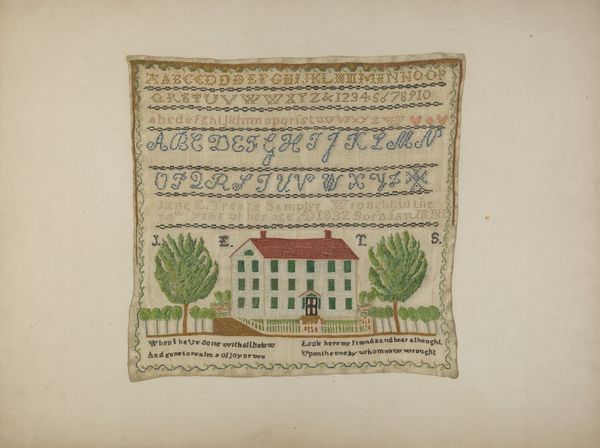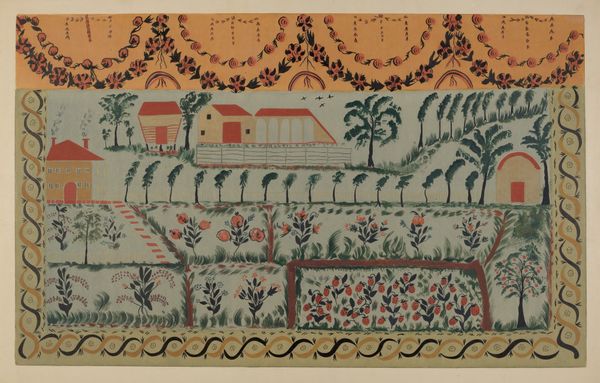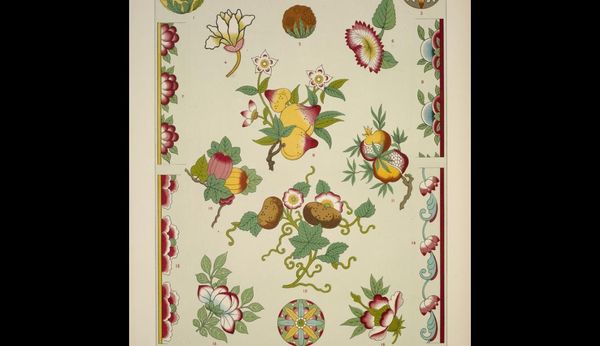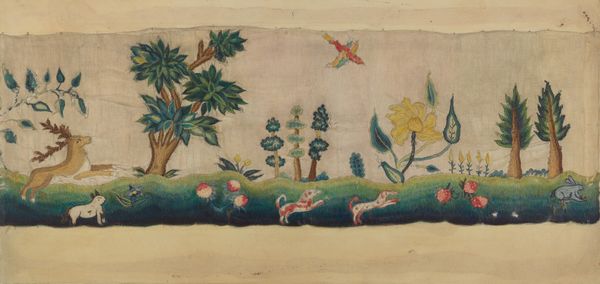
Zeichen-Mahler und Stickerbuch zur Selbstbelehrung für Damen, Zweiter Theil 1798
0:00
0:00
drawing, textile
#
drawing
#
landscape
#
textile
#
folk art
#
folk-art
#
romanticism
Dimensions: Sheet: 10 5/8 x 16 3/4 in. (27 x 42.5 cm) Book: 11 5/8 × 18 11/16 in. (29.5 × 47.5 cm)
Copyright: Public Domain
Curator: What an interesting piece! We’re looking at Johann Friedrich Netto’s "Zeichen-Mahler und Stickerbuch zur Selbstbelehrung für Damen, Zweiter Theil," created in 1798. It’s currently located here at the Metropolitan Museum of Art. Editor: It has an unusual, domestic quality about it. Like a sampler, but with these strange idyllic vignettes stitched all over. I find it immediately calming, despite what looks like a smoking volcano. Curator: Notice how Netto utilizes a combination of drawing and textile work. The piece really pushes the boundaries between art and craft, particularly as it's geared toward “ladies’ self-instruction.” The material tells us as much as the images: needlework, for centuries tied to the feminine, employed here to both depict landscapes and teach drawing techniques. Editor: That combination creates a fascinating tension, doesn't it? On one hand, it's about instruction and control. On the other, it's embracing the aesthetic of Romanticism, seen in the fascination with landscape and the sublime horror of the natural world – look at the volcanic eruption framed so delicately in the center! This really echoes broader artistic interests during the late 18th century, filtered through the particular constraints and expectations surrounding women’s creative labor. Curator: I’m intrigued by the cottages sprinkled throughout; they carry their own symbolic weight. They stand as representations of rustic virtue and simpler ways of living, reflecting a longing for escape from urban complexities during that period of enlightenment ideals taking shape across different cultures. Editor: Yes, it speaks volumes that this 'sticker book' format presents landscapes more often found in paintings or aristocratic prints within this highly specific medium. Imagine the hours upon hours it must have taken! It makes one wonder about the economics and social position of the woman who made it. Were these really just templates for bourgeois women? Or was something subversive intended by including a live volcano alongside these tranquil little abodes? Curator: A good question! Perhaps it served as a potent reminder of nature’s dual nature: as both serene haven and force majeure shaping not only environment but individual lives through forces sometimes entirely out human reckoning or rule Editor: I’m glad you’ve led us through considering it. This detailed look reveals so much cultural information woven directly into the very materials and images it presents. Curator: Indeed. Netto's craft manages to encapsulate an entire cultural landscape through this intersection between symbol and process.
Comments
No comments
Be the first to comment and join the conversation on the ultimate creative platform.
